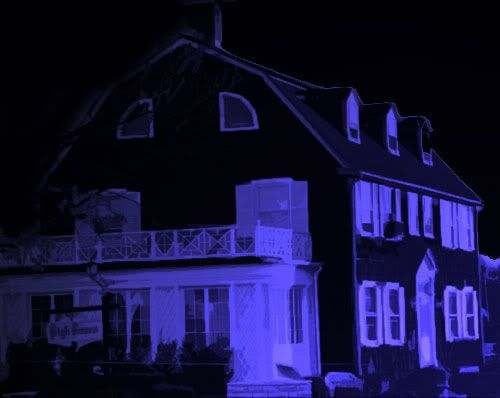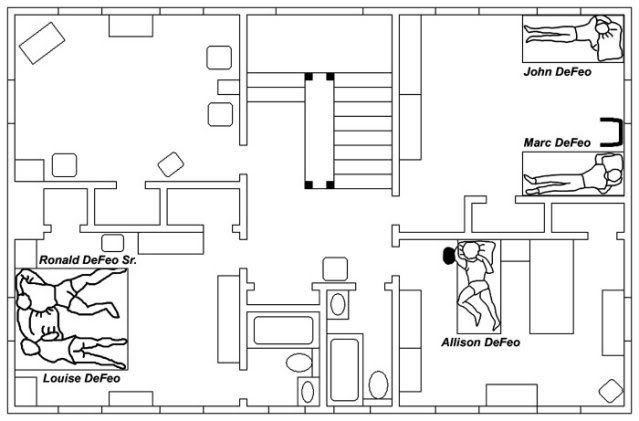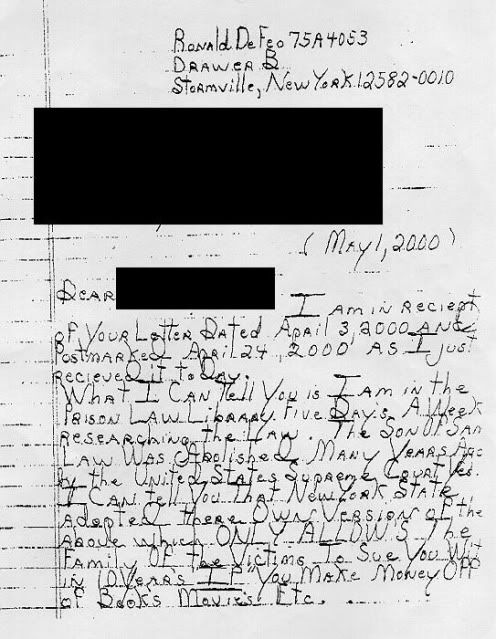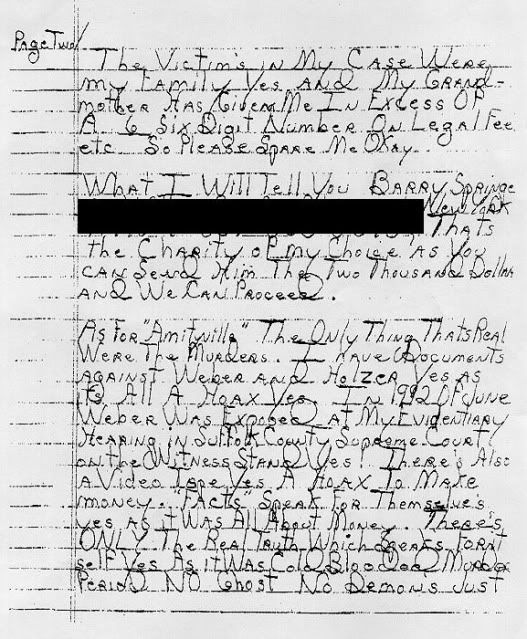
THE real history of 112 Ocean ave.
In a 2000 interview with The History Channel, Kathy Lutz claimed that a tragedy befell every family that lived in the DeFeo home. Moreover, Jay Anson's book suggests that the property is cursed because it had once belonged to John Ketcham, a suspected witch, who had fled Salem, Massachusetts before taking up residence in Amityville.
During an August 9, 1979 press conference, Jim Cromarty, then‑owner of the Amityville house, said, “I was born in Amityville. I knew every family that grew up in this house. And that is another crock. The Lutzes say that every family that was brought up in this house had bad things happen to them. It happens to be a fact that only one family had a tragedy happen to them in this house. Every other family had nothing but good things come out of the house.”
In the late 1600s, Amityville was part of Huntington Township. A check of the historical society located in Huntington, a town approximately 13 miles from Amityville, revealed that there were several John Ketchams in the area. Because records of this time period are sketchy at best, there was no clear proof that any Ketcham ever resided on or near the property. The most definitive proof against any John Ketcham's being a witch came from the Ketcham family's own extensive research into their genealogy. After careful investigation, they have been able to determine there never was a witch named John Ketcham.
According to deeds and information compiled by the Amityville Historical Society, the Ocean Avenue property had once been farmland belonging to the Irelands, one of Amityville's most prominent and influential families. On January 14, 1924, Annie Ireland sold the property to John and Catherine Moynahan. The following year, Amityville builder Jesse Perdy constructed the large Dutch Colonial that still stands there today. While their new home was being built, the Moynahans relocated to the old house down the street. When the house was finished, the family of six moved back in and once again enjoyed life by the Amityville Creek.
When John and Catherine Moynahan died, their daughter, Eileen Fitzgerald, moved in with her own family. She lived there until October 17, 1960, when John and Mary Riley bought the house. Because of marital problems, the Rileys divorced and sold the house to the DeFeos on June 28, 1965.
The DeFeos lived in the house for more than nine years until on November 13, 1974, the years of abuse and turmoil from Big Ronnie came to a head. After the DeFeos, the Lutz family moved into the property and then moved out in 28 days. Their stay was so short that they did not even make a payment on the $60,000 mortgage they had on the house. On August 30, 1976, the Lutzes returned the house to Columbia Savings and Loan. In September 1977, Jay Anson's bestselling book, The Amityville Horror, was released to the public. A blockbuster movie adaptation followed in 1979.
On March 18, 1977, Jim and Barbara Cromarty purchased the home from the bank. Although plagued by hordes of tourists searching for supernatural phenomena, the Cromartys managed to live there happily for a decade. Nonetheless, they found it necessary to change the address to confuse the curious.
During a press conference to refute the Lutzes' allegations, the Cromartys issued a two‑page statement. An excerpt read:
The quiet village of Amityville, Long Island, has been made infamous by a hoax. It will possibly never be the same. It is Long Island's equivalent to Watergate. None of us would be here today if a responsible publisher and author had not given credibility to two liars, and allowed them the privilege of putting the word true on a book in which in all actuality is a novel. The credibility of the hoax stems from using a charlatan Catholic priest, who has been banned from performing his religious duties by the Diocese of Rockville Centre, the equivalent of disbarment of a lawyer. This charlatan priest has been involved with a complicity to a lie and, therefore, deserves no credibility, and should be dealt with accordingly.
The Cromartys sued the Lutzes, Jay Anson and the publishers of The Amityville Horror. Their multi‑million dollar suit argued that not only was the book an invasion of privacy, but that "false misrepresentations were made willfully and solely for commercial exploitation." Eventually, the parties arrived at an undisclosed settlement.
As a child, Jim Cromarty played in the house, and both he and his wife were determined to make the home a part of the community again. Eventually, the curiosity seekers proved unbearable, and the Cromartys were forced to put the house on the market. They left friend Frank Birch to tend to the property and act as house-sitter while they were away. Neither Mr. Birch nor the Cromartys ever reported any supernatural happenings. The Cromartys eventually moved back in and took the house off the market. They remained in the house happily until 1987 when David Roskin, Barbara's son from a previous marriage, reportedly passed away in a hospital.
On August 17, 1987, Peter and Jeanne O'Neil purchased the house from the Cromartys. During their stay, they changed the famed eye‑windows to square ones and filled in the DeFeo pool. Since the yearly property taxes are in excess of $10,000, neighbors state that the O'Neils moved to save money for their children's college tuition.
On June 10, 1997, Brian Wilson purchased the house for approximately $310,000. Since 1997, Wilson has renovated the property. Among the many improvements, he has strengthened the foundation of the sinking boathouse and added a sunroom to the back of the house.
Crime scene diagram:

The confession:


Mug shots:

In the late 1970s, Amityville became synonymous with horror after Jay Anson’s book The Amityville Horror became a bestseller. The official Amityville Village response to the story is that it was all a hoax. Amityville Mayor Peter Imbert stated in a recent Newsday article that, "We don't see it as a positive thing for the community."
Regardless, there are those in Amityville who believe that the village should capitalize on the story much like Salem, Massachusetts, has chosen to cash in on its infamous reputation stemming from the Salem witch trials. Nevertheless, when presented with the idea to turn the house into a bed and breakfast, Amityville village trustees have constantly voted against it. Twenty-five years ago, Jay Anson's book and the subsequent movie version put the Village of Amityville on the map. Therefore, it is conceivable that in another 25 years, tourists will still be travelling down Ocean Avenue to see the "horror" house. If at that time the house does not exist, then the visitors will be travelling to see a vacant plot where the horror house once stood. Neither Amityville nor the owners of the infamous house will ever be able to outrun the myths.
No comments:
Post a Comment